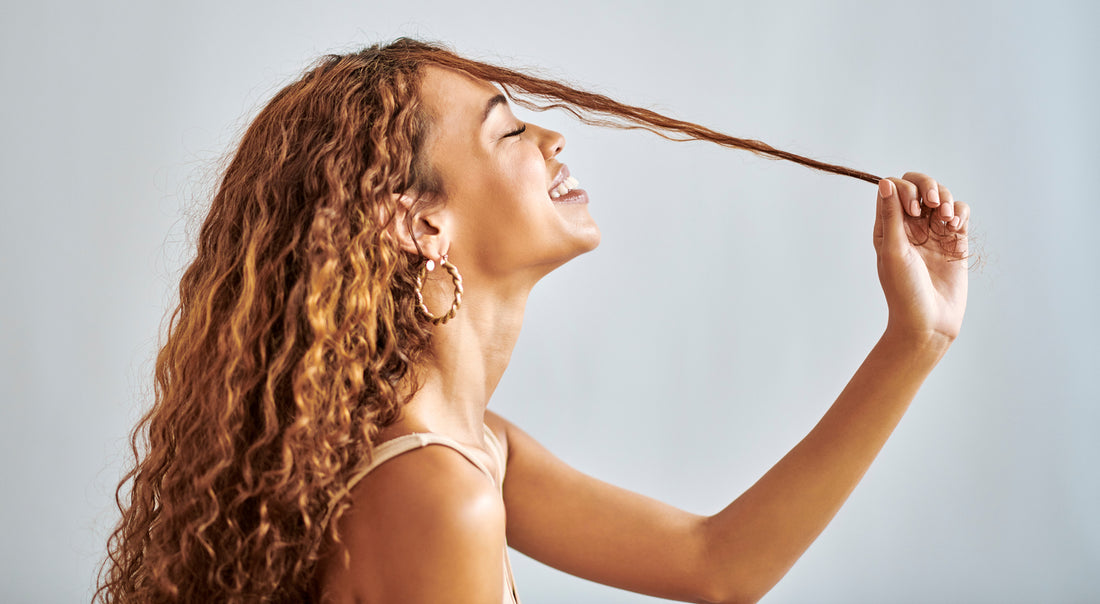
Why Stretching Your Curls Is Essential To Your Prep Routine

Stretching isn't just great fitness prep -- it's an essential part of your hair care prep too! The benefits of protective styles are as numerous as their versatility. If you're exploring the world of faux locks for the first time, you may be wondering what kind of prep is needed before installing a protective style. The team at RevAir has put together a simple guide with tips to get your hair ready.
Stretching your curls is one of the most important steps for ensuring your hair is healthy and thriving before putting it into a protective style. Natural hair is often prone to shrinkage, which reduces volume and length. Shrinkage occurs through evaporation as the weight of water molecules causes the hair cuticle to expand and elongate. Although this is a natural process, shrinkage often stalls new hair growth or gives the illusion of shorter curls. Stretching draws out knots and tangles to allow for natural hair growth while your curls are in a protective hairstyle. For best results, prepping your hair well in advance is recommended.
Start your protective style prep alongside the RevAir community with these reliable tips and tricks for getting the most out of your protective hairstyle.
Discover the Benefits of Protective Styles and How Prepping Your Hair Can Level Up The Look

Protective styles are great for natural hair growth. In a nutshell, protective styles for natural hair are any type of hair extension or faux hair that covers your edges and prevents damage. Think braids, locks, twists, wigs, and more! Protective styles are a low-maintenance option for type 4 hair. Moreover, to all curly hair types looking for a creative, but effortless option. Many naturalistas rely on protective styles for seasonal hair care. Putting your natural hair up can support healthy curls. It can also help you manage dryness, sun exposure, and water or chlorine exposure. The perfect choice for active lifestyles, faux locks can elevate your look with colors, textures, and designs.
Begin Your Faux Locks Journey With a Little Inspiration
Take a look through your favorite natural hair looks or see what show-stopping styles other naturalistas are creating. Learn your hair type as well as its needs. If you have 4c coily hair, for example, you may want to opt for a low-tension protective style like crochet braids. If your hair is closer to type 2 and type 3 waves, take a look at twists designed to gently protect and style loose waves without pulling at the ends. You can take your protective style to the next level with colors, highlights, and accessories. Adding a pop of ethereal blue or purple, a burst of golden highlight, or subtle beads and clips can really bring the trend together. If you haven't landed on the right style for you yet, follow along with our curly hair community for more great ideas!
Protective Styles Promote Healthy Scalp

The benefits of protective styles include supporting a healthy scalp. To prepare for your new locks, we recommend a deep cleansing. This step removes any product build-up and residue. Start with a scalp cleanse! Grab your scalp brush and gently massage away any flakes using a deep cleansing oil to soothe inflammation. Follow up with a clarifying shampoo that contains purifying ingredients such as activated charcoal. If your hair has been recently processed or treated, the cleansing process will prep your natural curls for a protective style and ensure optimal hair health. In addition, when transitioning from one protective style to another, a deep cleanse is a key step for ensuring a smooth transition and maintaining scalp health.
Consider a protein treatment prior to protective styling. Choose a deep conditioner rich in hydrolyzed protein, panthenol, collagen, and/or keratin to boost your hair's resilience. If you're opting for a heavier protective style with lots of length and volume, this step will reduce breakage and tension on your natural hair. Promoting natural hair growth while rocking a protective style is among the top benefits of protective styles. You want to make sure your hair is primed for growth before installing your new look. Protein is the building block of new hair growth and allows your hair to flourish and shine throughout the duration of the protective style.
Lastly, stretching your hair prior to installing a protective style. Learn more about the benefits and technique behind maximizing length for new hair growth.
Techniques, Tricks, and Tips for Stretching Hair
Start by combing out that tension! Do you have a curl-friendly brush or comb? We recommend an anti-static silicone brush with wide bristles to gently detangle and minimize breakage. Combing out your curls is step one in stretching your hair for a protective style. You can use a combination of brushing and manually working through tangles to get your locks to their fullest.
Wash Day Rundown
Rather than using a wet brush to stretch, we'd recommend doing this step with dry hair so you can see the length and bring out your natural hair growth and texture. Treat combing out your locks as a part of your self-care routine! Do a face mask and relax. Combing your hair out will take time, but the end result is longer, healthier natural locks that fit perfectly with your new style.
Next, finish your wash day routine with hydrating curly hair products. These products should be rich, oil-based products for high porosity hair to encompass type 4 curls. Focus on natural ingredients such as coconut oil, jojoba, and rose. For conditioners, test the "slip" of the formula by comparing how easily you can run a brush through your curls while wet. A good product should allow you to glide through any tangles without tugging and pulling. To give your hair the extra boost it needs for protective style prep, follow up with a nourishing serum to seal the ends. This step is especially important for 4c coily hair as sealing the ends prevents moisture from escaping and allows you to easily stretch your locks.
Your RevAir is the perfect tool for damage-free protective style prep. The unique reverse air design is gentle enough for smoothing all hair types, but strong enough to sculpt and stretch type 4 hair. So how exactly does the RevAir work when it comes to prepping your hair for protective styles? Simple! By using vacuum suctioning power and low heat (3x lower than traditional styling tools), heat is distributed across the surface area of the hair while you dry your curls. This prevents heat from over-targeting a specific spot and causing damage, while also gently pulling and lifting the hair to stretch and smooth your curls. The end result is style-ready locks in half the time of traditional high-heat methods. Learn more about how you can use your RevAir to prep for a protective style.
Bedtime Wind Down

Of course, it's not only your daily style routine that affects your hair's integrity and length. When preparing for a protective style, a key tip for maximizing length is to prioritize your sleep routine. Start by getting more hours of rest! The power of sleep should never be underrated as an amazing form of self-care that lowers stress and promotes natural hair growth. If you haven't invested in a silk pillowcase yet, treat yourself to a bedroom upgrade. Sleeping on anti-frizz, cooling fabric is a great way to prevent breakage overnight. A bonnet completes the bedhead-proof routine for optimal hair health. If you aren't fond of bonnets, consider pulling your curls into a pineapple protective style before bed. The pineapple technique prevents frizz and tangles while you sleep and can be easily achieved by gathering your hair into a high ponytail and slipping a scrunchie over the base.
Protective Style Benefits
Did you know protective styles can help stretch your hair? If you're prepping your hair for locs, braids, or other styles, consider low-tension hairstyles to bridge the gap. Many of these styles can be installed at home, such as simple, but elegant braids. Braids are a go-to style for stretching hair. Detangle, brush, and braid for silky waves. We recommend braiding wet hair for the most defined braid out. Bantu knots and twists are also low-tension protective style alternatives for stretching curls. Lastly, we have to mention banding. Banding is a simple DIY protective style technique for stretching long natural hair and promoting growth. All you need are some soft hair ties to section the hair into mock braids. You can sleep in your braids or style them to wear around town. When it's time to let your curls loose, you'll notice the difference in voluminous waves.
Protective styling is one of the best ways to encourage your curls to grow. When our hair is at its healthiest, our curls are ready to flourish. Of course, when preparing for a protective style, a "warm-up" routine can help your hair look and feel its best. Stretching your hair prior to installing your faux locks will ensure the natural hair growth continues for the life of your style.
Are you looking for more natural hair inspiration? Contact the team at RevAir and check our From Blossoms to Braids: Creative Hairstyles to Encourage Hair Growth This Spring.















